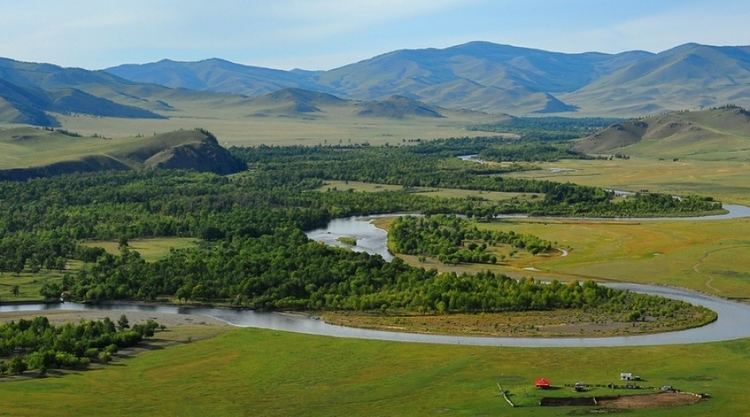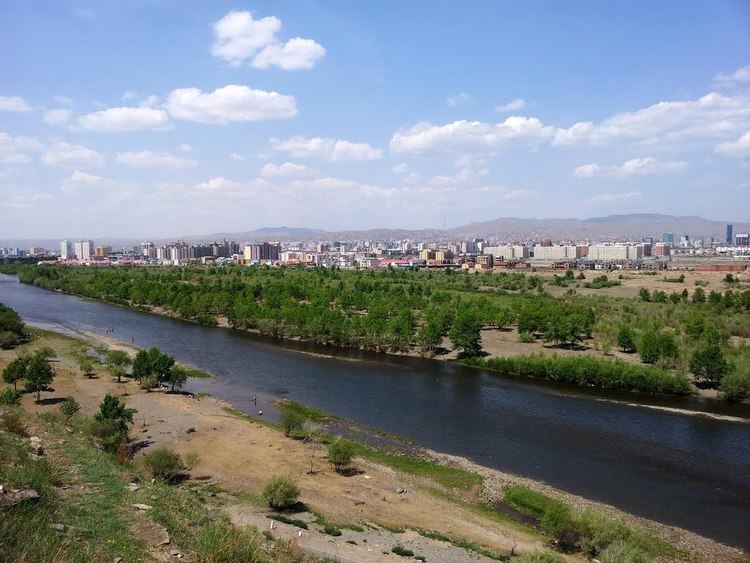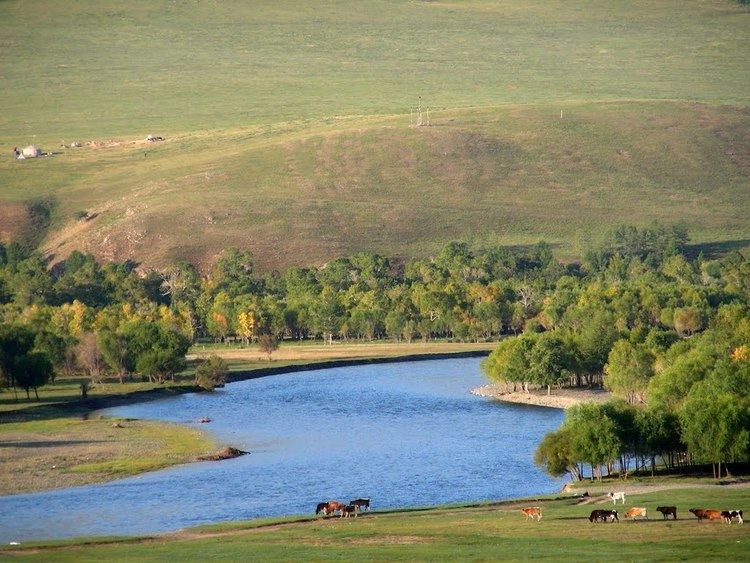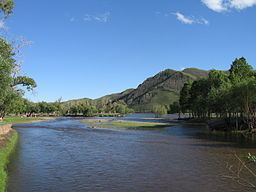- right Terelch River Length 704 km Basin area 49,840 km² | Basin area 49,840 km² | |
 | ||
Tuul river ulaanbaatar fly fishing 2012 10 24
The Tuul River or Tula River (Mongolian: Туул гол, Chinese: 土拉河; pinyin: Tǔlā Hé; in older sources also Tola) is a river in central and northern Mongolia. Sacred to the Mongols, the Tuul is generally called the Khatan (Queen) Tuul in Mongolian. It is 704 kilometres or 437 miles long and drains an area of 49,840 square kilometres or 19,240 square miles. The river is called the "Duluo river" in the Book of Sui, a Chinese historical work completed in 636 AD. The Secret History of the Mongols (1240 AD) frequently mentions a "Black Forest of the Tuul River" where the palace of Wang Khan was located. The Ming dynasty (1368–1644) was established by the progressive expulsion of the Mongol Empire from China. After capturing Beijing, the Ming's founding Hongwu Emperor defeated the Mongols at the Tula River in 1372, driving them back to the Orhon River. The following Hongwu Emperor would find it necessary to defeat the Oirats at the river Tula again in 1414.
Contents

The river originates in the Khan-Khentein-Nuruu Nature Reserve in the Khentii Mountains, in the Erdene sum of Töv aimag. From there it travels southwest until it reaches the territory of Ulaanbaatar. Its water runs through the southern part of the capital, continuing in western direction in large loops. When it meets the border of Bulgan aimag it turns north, running along that border. After it enters Selenge aimag, it discharges into the Orkhon River near the sum center of Orkhontuul sum.

The Orkhon flows into the Selenge River, which flows into Russia and Lake Baikal. The Tuul River also flows along the Khustain Nuruu National Park. It is typically frozen over from the middle of November through the middle of April. Willow forests grow along the Tuul River, and the river itself is home to endangered species of sturgeon. Currently the river is suffering from pollution, some caused by Ulaanbaatar's central sewage treatment facility, as well as heavy mineral and sedimentation pollution caused by gold mining in the Zaamar area. In addition, the steady influx of people settling near the river may be causing a degradation of water quality.

Save tuul river 2015
Descriptions

The French missionary Jean-Francois Gerbillon, who traveled many times through Mongolia, gave a description of the Tuul river in his Journal entry dated August 3, 1698:

This River (Tula) takes it source in the Kentay mountains, a 120 li from the Kerlon river. At first it flows South-West. Then it makes a direct turn towards the West after passing a mountain (Mount Bogd Khan Uul in southern Ulan Bator) at the foot of which we camped and which is located precisely to the West of the place where the small Terelki River empties into the Tula. It is much bigger than the Kerlon. Its waters are extraordinarily clear and flows over a bed of river stones. Nothing approaches the agreeableness of its banks in all the extent of the plain. Its banks are covered in beautiful woods. Because the river divides into many branches, separating and rejoining, it forms quite a few small islands, full of diverse trees very thick and bushy, which are the most agreeable trees in the world and which offered a delicious freshness in the great heat where we were. The current of this River is very rapid. Beyond the trees, on one side and the other, one can see an abundantly fertile prairie. In one word, it is the most agreeable Canton that I ever remember seeing in all our voyages through Tartary.
Monsieur de Bourboulon (Minister of France) also visited the river in 1860:

Monsieur de Bourboulon, wanting to stroll without escort through the Mongol capital, made his way early past the Russian quarter to the banks of the Toula…Monsieur de Bourboulon came to the banks of the Toula and sat on a mound underneath a birch tree: in ecstasy before this magnificent landscape, one of the most beautiful given to man to contemplate, happy to see the pure waters of this beautiful river murmuring at his feet, and rejoicing avidly, after the arid and monotonous deserts that he crossed, at the fertility of this rich and picturesque nature. He was there plunged in a delicious reverie when he heard the confused noise of words behind him: it was Mongols of the high class, Taiji or gentlemen, who were trying to make him understand through various signs that if he wanted to cross the river they would gladly take him on their horses.
Orkhon inscriptions states that Once Oghuz Turks were living on the sides of Tuul River neighbouring to Tatars. Oghuz Turks migrated from this place to western regions in the 8th century.
